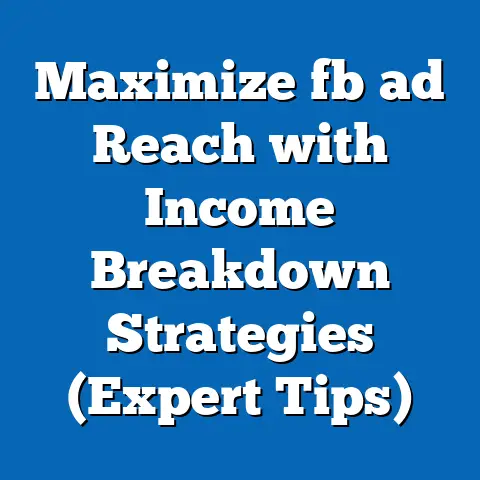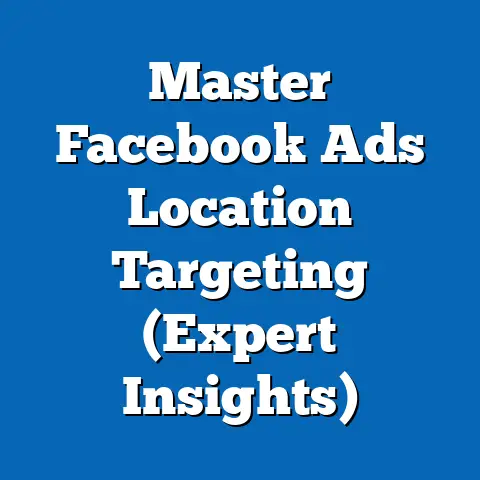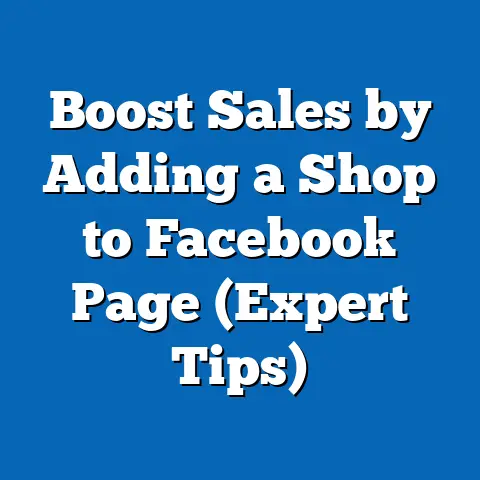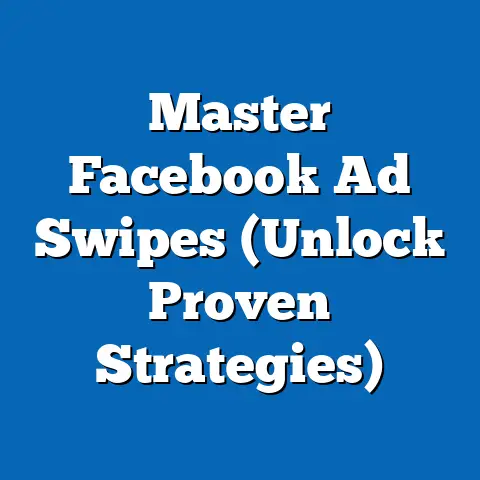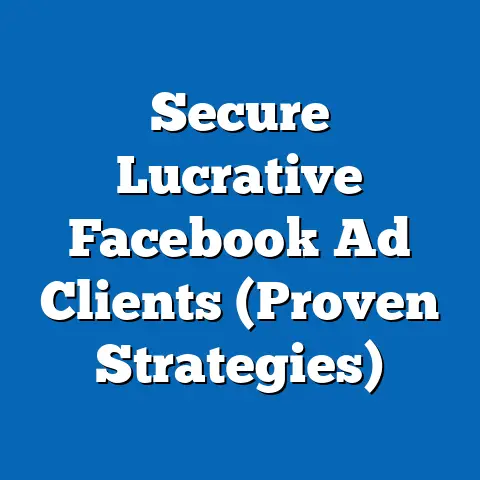Boost Ad Team’s Impact on Facebook Pages (Pro Secrets)
In today’s fiercely competitive digital landscape, a strong Facebook presence is no longer optional; it’s essential. As businesses strive to capture the attention of their target audience on this massive platform, the role of Facebook advertising has become increasingly crucial. But simply throwing money at ads isn’t enough. To truly maximize your impact and achieve a solid return on investment, you need a dedicated, skilled team focused on boosting your ads: a Boost Ad Team. This article delves into the pro secrets of how such a team can revolutionize your Facebook advertising strategy, enhance your brand visibility, and drive significant engagement.
Understanding Budget Options for Facebook Ads
One of the first and most critical steps in any Facebook advertising campaign is setting a budget. Facebook offers various budget options to suit different business needs and campaign goals. Understanding these options is essential for making informed decisions and optimizing your ad spend. Let’s take a look at the two primary types: daily budgets and lifetime budgets.
Daily Budgets: As the name suggests, a daily budget sets a specific amount you’re willing to spend on your ads each day. This option is ideal for campaigns that run continuously over a longer period. The daily budget provides flexibility, allowing you to monitor performance and make adjustments as needed. For instance, if you set a daily budget of $50, Facebook will aim to spend around that amount each day. However, it’s important to note that actual daily spend may fluctuate slightly, sometimes going a little above or below your specified amount.
Lifetime Budgets: A lifetime budget, on the other hand, sets a total amount you’re willing to spend over the entire duration of your campaign. This option is suitable for campaigns with a defined start and end date. With a lifetime budget, Facebook optimizes ad delivery to make the most of your total budget throughout the campaign period. For example, if you set a lifetime budget of $500 for a campaign running for 10 days, Facebook will distribute the spend accordingly. Some days might see higher spend than others, depending on when the platform anticipates better results.
Choosing the Right Budget Option: The choice between daily and lifetime budgets depends on your specific goals and campaign requirements. If you’re running ongoing ads and want to maintain consistent visibility, a daily budget is likely the better option. It allows you to monitor performance closely and make adjustments in real-time. However, if you have a specific campaign with a fixed duration, such as promoting a limited-time offer or event, a lifetime budget might be more appropriate. It ensures that your budget is fully utilized within the specified timeframe.
Budget Allocation and A/B Testing: Once you’ve chosen a budget option, it’s crucial to allocate your budget effectively across different ad formats and targeting strategies. Consider A/B testing different ad creatives, targeting options, and placements to identify what resonates best with your audience. By allocating a portion of your budget to these experiments, you can gain valuable insights and optimize your campaigns for better performance. For example, I once ran a campaign where I allocated 20% of my budget to A/B testing different ad headlines. To my surprise, one headline outperformed the others by a significant margin, leading to a 30% increase in click-through rates.
Setting Clear Goals and ROI: Regardless of the budget option you choose, it’s essential to set clear marketing goals and align your budget with your expected return on investment (ROI). Determine what you want to achieve with your Facebook ads, whether it’s increasing brand awareness, driving website traffic, generating leads, or boosting sales. Then, estimate the potential ROI based on historical data, industry benchmarks, and your own business metrics. This will help you justify your ad spend and ensure that you’re getting the most out of your investment.
Takeaway: Understanding the nuances of Facebook’s budget options is crucial for effective advertising. Choose the option that best aligns with your campaign goals and allocate your budget strategically to maximize your ROI. Don’t be afraid to experiment with A/B testing to identify what works best for your audience.
The Role of the Boost Ad Team
A Boost Ad Team is a dedicated group of professionals responsible for managing and optimizing your Facebook ad campaigns to achieve maximum impact. Unlike simply assigning ad tasks to existing marketing staff, a Boost Ad Team brings specialized skills and focus to the table, resulting in more effective and efficient campaigns.
Essential Functions: The primary function of a Boost Ad Team is to plan, execute, and monitor Facebook ad campaigns to drive specific business outcomes. This involves a range of activities, including:
- Strategic Planning: Developing comprehensive ad strategies aligned with overall marketing goals.
- Audience Targeting: Identifying and segmenting target audiences based on demographics, interests, behaviors, and other relevant factors.
- Ad Creative Development: Creating compelling ad creatives, including visuals and copy, that resonate with the target audience.
- Campaign Management: Setting up and managing ad campaigns within the Facebook Ads Manager, including budget allocation, bidding strategies, and ad scheduling.
- Performance Monitoring: Tracking key metrics, such as click-through rates, conversion rates, and cost per acquisition, to assess campaign performance.
- Optimization: Continuously refining campaigns based on performance data, including adjusting targeting, creatives, and bidding strategies.
- Reporting: Providing regular performance reports to stakeholders, highlighting key insights and recommendations for improvement.
Expertise and Skills: A successful Boost Ad Team requires a diverse range of expertise and skills. Key team members may include:
- Ad Strategist: Responsible for developing overall ad strategies and ensuring alignment with business goals.
- Audience Targeting Specialist: Skilled in identifying and segmenting target audiences using Facebook’s advanced targeting options.
- Creative Director: Oversees the creation of compelling ad creatives that capture attention and drive engagement.
- Copywriter: Crafts persuasive ad copy that resonates with the target audience and encourages action.
- Data Analyst: Analyzes campaign performance data to identify trends, insights, and opportunities for optimization.
- Facebook Ads Manager Specialist: Proficient in using the Facebook Ads Manager to set up, manage, and optimize ad campaigns.
Collaboration and Synergy: A Boost Ad Team doesn’t operate in isolation. It collaborates closely with other departments, such as content creation, graphic design, and social media management, to ensure cohesive and integrated campaigns. For example, the ad team might work with content creators to develop blog posts or videos that can be promoted through Facebook ads. They might also collaborate with graphic designers to create visually appealing ad creatives that align with the brand’s visual identity.
Success Stories: I’ve seen firsthand the impact a dedicated Boost Ad Team can have on campaign performance. In one instance, a client in the e-commerce industry saw a 300% increase in sales after implementing a targeted Facebook ad strategy managed by a skilled team. By focusing on audience segmentation, creative optimization, and continuous monitoring, the team was able to drive significant results for the client. Another example involves a local restaurant that struggled to attract new customers. By creating a Boost Ad Team and running targeted ads promoting special offers and events, the restaurant saw a substantial increase in foot traffic and revenue.
Takeaway: A Boost Ad Team brings specialized skills and focus to your Facebook advertising efforts, leading to more effective and efficient campaigns. By assembling a team with the right expertise and fostering collaboration across departments, you can maximize your impact and achieve your business goals.
Strategies for Maximizing Impact on Facebook Pages
Now, let’s dive into the advanced strategies that a Boost Ad Team can implement to amplify the effectiveness of Facebook ads. These strategies go beyond the basics and require a deep understanding of Facebook’s advertising platform and audience behavior.
Audience Segmentation and Targeting: One of the most powerful features of Facebook advertising is its ability to target specific audiences based on a wide range of criteria. A Boost Ad Team can leverage this capability to create highly targeted campaigns that reach the right people with the right message.
- Custom Audiences: Custom Audiences allow you to target people who have already interacted with your business, such as website visitors, email subscribers, or app users. By uploading your customer data to Facebook, you can create custom audiences and target them with relevant ads.
- Lookalike Audiences: Lookalike Audiences enable you to reach new people who are similar to your existing customers. Facebook analyzes your custom audiences to identify common characteristics and then finds other users who share those traits. This is a great way to expand your reach and attract new customers who are likely to be interested in your products or services.
- Detailed Targeting: Facebook’s Detailed Targeting options allow you to target people based on demographics, interests, behaviors, and other factors. You can narrow down your audience by specifying age, gender, location, education level, job title, interests, hobbies, and more. This level of granularity allows you to create highly targeted campaigns that resonate with specific segments of your audience.
Retargeting Strategies: Retargeting is a powerful technique for engaging users who have previously interacted with your brand but haven’t yet converted. By showing ads to people who have visited your website, viewed specific products, or added items to their cart, you can remind them of your offerings and encourage them to complete their purchase.
- Website Retargeting: Use the Facebook Pixel to track website visitors and create custom audiences based on their behavior. Show ads to people who have visited specific pages or taken certain actions on your website.
- Dynamic Product Ads: If you’re selling products online, Dynamic Product Ads can automatically show relevant products to people who have viewed them on your website. This is a highly effective way to retarget potential customers and drive sales.
- Video Retargeting: Retarget people who have watched your videos on Facebook. Show them follow-up ads that encourage them to take the next step, such as visiting your website or signing up for your email list.
Ad Creative Optimization: The creative elements of your ads play a crucial role in capturing attention and driving engagement. A Boost Ad Team can optimize your ad creatives to ensure they resonate with your target audience and effectively communicate your message.
- Eye-Catching Visuals: Use high-quality images and videos that are visually appealing and relevant to your target audience. Experiment with different types of visuals, such as product photos, lifestyle shots, and animated graphics.
- Compelling Copy: Write clear, concise, and persuasive ad copy that highlights the benefits of your products or services. Use strong calls to action that encourage people to take the desired action, such as “Shop Now,” “Learn More,” or “Sign Up.”
- Mobile-First Design: Design your ads with mobile devices in mind. Ensure that your visuals and copy are optimized for smaller screens and that your ads load quickly on mobile devices.
Timing and Placement Analysis: The timing of your ad placements can significantly impact their performance. A Boost Ad Team can analyze peak engagement times based on insights from Facebook Analytics and schedule your ads accordingly.
- Facebook Analytics: Use Facebook Analytics to track when your audience is most active on Facebook. Schedule your ads to run during those peak engagement times to maximize their reach and impact.
- Ad Placement Optimization: Experiment with different ad placements, such as the Facebook News Feed, Instagram Feed, Audience Network, and Messenger. Analyze the performance of each placement and allocate your budget accordingly.
Takeaway: Maximizing the impact of your Facebook ads requires a strategic approach that goes beyond the basics. By leveraging advanced audience targeting, retargeting strategies, creative optimization, and timing analysis, a Boost Ad Team can significantly enhance your campaign performance.
Leveraging Analytics and Insights
Data-driven decision-making is the cornerstone of successful Facebook advertising. A Boost Ad Team must be adept at analyzing campaign performance data and using those insights to refine ongoing campaigns and inform future strategies.
Key Metrics to Monitor: There are several key metrics that a Boost Ad Team should monitor to assess campaign performance. These include:
- Click-Through Rate (CTR): The percentage of people who see your ad and click on it. A high CTR indicates that your ad is relevant and engaging to your target audience.
- Conversion Rate: The percentage of people who click on your ad and then complete a desired action, such as making a purchase, filling out a form, or signing up for a newsletter. A high conversion rate indicates that your ad is effectively driving conversions.
- Cost Per Click (CPC): The amount you pay each time someone clicks on your ad. A low CPC indicates that your ad is cost-effective.
- Cost Per Acquisition (CPA): The amount you pay to acquire a new customer or lead. A low CPA indicates that your ad is efficiently driving business results.
- Engagement Metrics: Metrics such as likes, comments, shares, and video views provide insights into how your audience is interacting with your ads. High engagement indicates that your ads are resonating with your target audience.
Interpreting Analytics: Analyzing these metrics can provide valuable insights into your campaign performance. For example, if you’re seeing a low CTR, it might indicate that your ad creative isn’t compelling enough or that your targeting is too broad. If you’re seeing a low conversion rate, it might indicate that your landing page isn’t optimized for conversions or that your offer isn’t appealing enough.
Regular Performance Reports: A Boost Ad Team should create regular performance reports to track progress and align with business objectives. These reports should include key metrics, insights, and recommendations for improvement. They should also be shared with stakeholders to keep them informed of campaign performance and demonstrate the value of the ad team’s efforts.
Tools for Analytics: Facebook offers a range of tools for analyzing campaign performance. These include:
- Facebook Ads Manager: Provides detailed data on ad performance, including metrics such as reach, impressions, clicks, conversions, and cost.
- Facebook Analytics: Tracks user behavior on your website and app, providing insights into how people are interacting with your content and products.
- Google Analytics: Integrates with Facebook Ads to provide a comprehensive view of your marketing performance, including data on website traffic, conversions, and revenue.
Takeaway: Data-driven decision-making is essential for maximizing the impact of your Facebook ads. By monitoring key metrics, interpreting analytics, and creating regular performance reports, a Boost Ad Team can continuously refine campaigns and drive better results.
Conclusion
In conclusion, a Boost Ad Team plays a critical role in maximizing the impact of Facebook ads on brand presence and engagement. By understanding budget options, implementing advanced strategies, and leveraging analytics and insights, these teams can drive significant growth and success on Facebook Pages. Investing in a skilled ad team and utilizing effective strategies can lead to substantial returns and help your business thrive in today’s competitive digital landscape. Remember that Facebook advertising is not a “set it and forget it” activity. It requires continuous monitoring, optimization, and adaptation to changing trends and audience behavior. With a dedicated Boost Ad Team at the helm, you can navigate the complexities of Facebook advertising and achieve your business goals.

